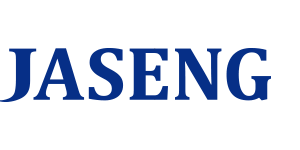Two doctors supporting the patient during MSAT
Jaseng’s study protocol “Motion style acupuncture treatment (MSAT) for acute low back pain with severe disbility: a multicenter, randomized, controlled trial protocol” by Joon-shik Shin, In-hyuk Ha, Tae-gyu Lee, Young-kwon Choi, Byoung-yoon Park, Me-riong Kim and Myeong-soo Lee has been published on BMC Complementary and Alternative Medicine on December 13th, 2011.

Joon-shik Shin, In-hyuk Ha, Tae-gyu Lee, Young-kwon Choi, Byoung-yoon Park, Me-riong Kim and Myeong-soo Lee
BMC Complementary and Alternative Medicine 2011, 11:127 doi:10.1186/1472-6882-11-127
Published: 13 December 2011
Abstract
Background
Acupuncture is widely-used to treat patients with low back pain, despite insufficient evidence of the technique’s efficacy for acute back pain. Motion style acupuncture treatment (MSAT) is a nontraditional acupuncture treatment requiring a patient to exercise while receiving acupuncture. In Korea, MSAT is used to reduce musculoskeletal pain and improve functional status. The study aims to evaluate the effect of MSAT on acute low back pain with severe disability.
Methods
This study is a multicenter, randomized, active-controlled trial with two parallel arms. Participants with acute low back pain and severe functional disability, defined as an Oswestry Disability Index (ODI) value > 60%, will be randomly allocated to the acupuncture group and the nonsteroidal antiinflammatory drug (NSAID) injection group. The acupuncture group will receive MSAT and the NSAID injection group will receive an intramuscular injection of diclofenac. All procedures will be limited to one session and the symptoms before and after treatment will be measured by assessors blinded to treatment allocation. The primary outcome will be measured at 30 minutes after treatment using the numerical rating scale (NRS) of low back pain while the patient is moving. Secondary outcomes will be measured at 30 minutes after treatment using the NRS of leg pain, ODI, patient global impression of change, range of motion (ROM) of the lumbar spine, and degrees of straight leg raising (SLR). Post-treatment follow-up will be performed to measure primary and secondary outcomes with the exception of ROM and SLR at 2, 4, and 24 weeks after treatment.















